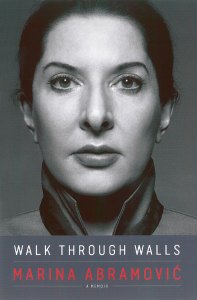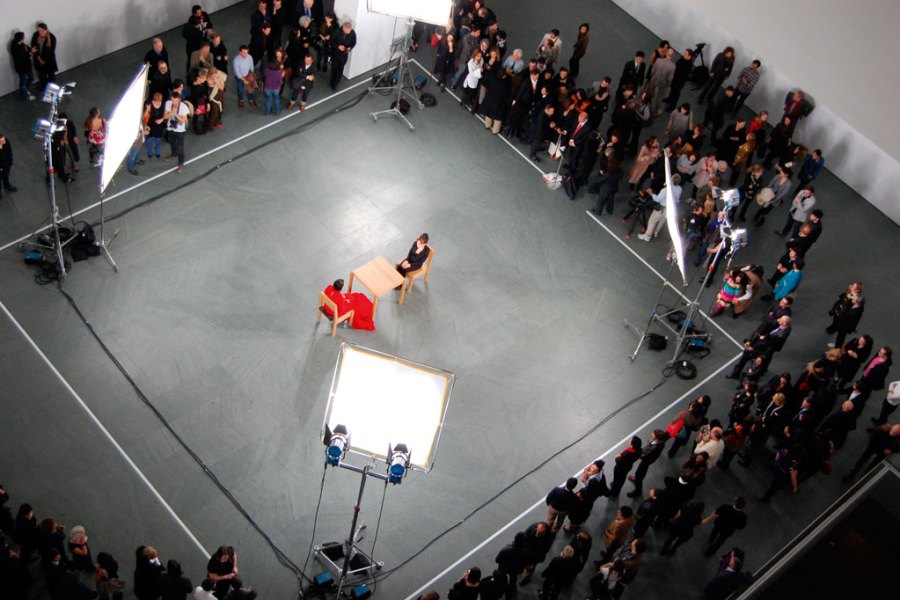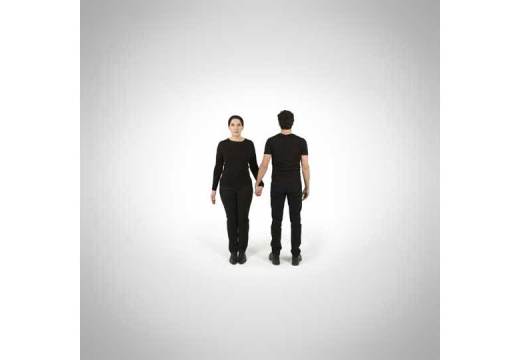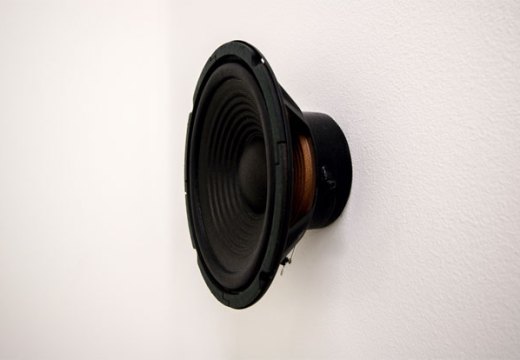At an Austrian gallery in 1975, Marina Abramović staged the performance Thomas Lips, in which she cut a five-pointed star into her stomach using a razor blade. According to Abramović: ‘The pain was like a wall I had walked through and come out the other side.’ The artist’s capacity to overcome limits, be they physical or psychological, is at the heart of her intimate and aptly titled memoir Walk Through Walls. Yet it’s hard to imagine becoming more intimate with an artist whose work across five decades has so persistently engaged with the personal and in which her body has been both subject and medium. In recent years, Abramović has also become a well-known public figure, thanks to major exhibitions at MoMA and the Serpentine, not to mention her collaborations with Lady Gaga and Jay-Z.
Thomas Lips serves as a reminder of Abramović’s extreme early work, and a time when she ‘yearned to make my own art more visceral’. In Rhythm 10, which she performed at the Edinburgh Festival in 1973, the artist used 10 knives to stab at the gaps between her spread-out fingers, nicking her skin in the process. The work was a turning point, marking the ‘way past painting’ that Abramović sought: ‘I had experienced absolute freedom – I had felt that my body was without boundaries, limitless…That was the moment that I knew that I had my medium.’ Rhythm 0 (1974), in which Abramović laid out 72 items (including a pistol) and challenged onlookers to do what they wanted to her, signalled the beginning of a lifelong collaboration with her audience.
 The freedom Abramović craved was not only from two-dimensional art, but also from Belgrade (where she went to art school) and from her controlling mother. The artist was raised in Yugoslavia under Tito’s Communist dictatorship. Her parents were tough war heroes whose ‘marriage was like a war’; despite material privileges, she was raised in a household with a ‘complete lack of love’. Abramović’s skill for endurance seems tied to her mother’s own self-discipline and ability to withstand pain – ‘nobody has, and nobody ever will hear me scream’, she told her daughter. Although she married at 24, Abramović ended up back at her mother’s house with a strict 10pm curfew.
The freedom Abramović craved was not only from two-dimensional art, but also from Belgrade (where she went to art school) and from her controlling mother. The artist was raised in Yugoslavia under Tito’s Communist dictatorship. Her parents were tough war heroes whose ‘marriage was like a war’; despite material privileges, she was raised in a household with a ‘complete lack of love’. Abramović’s skill for endurance seems tied to her mother’s own self-discipline and ability to withstand pain – ‘nobody has, and nobody ever will hear me scream’, she told her daughter. Although she married at 24, Abramović ended up back at her mother’s house with a strict 10pm curfew.
Abramović met her collaborator and lover Ulay in 1975, and his presence is one of the book’s guiding forces. The pair worked together for 12 years, living simply and travelling around Europe in an old Citroën police van – a far cry from Abramović’s gilded later life in New York. Their joint works saw them slap each other (Light/Dark; 1977), smack their bodies together (Relation in Space; 1976) and stand still while Ulay pointed an arrow at Abramović’s heart (Rest Energy; 1980). She writes touchingly about Ulay, but not without a degree of theatricality: ‘I think we both felt from the outset that there was something historical about our relationship.’ The separation that followed their walk across the Great Wall of China follows this dramatic arc.
These early chapters are moving, with Abramović actively using the memoir form to reveal the persona ‘I try to keep hidden’. That’s not to say there isn’t a certain amount of personal mythologising: she is deeply aware of how the book functions as another performance. There are three Marinas, we are told: ‘There is the warrior one. The spiritual one. And there is the bullshit one,’ and all three are present here. The last persona, ‘who thinks everything she does is wrong’, is vulnerable and seems at odds with the self-controlled figure that drew 750,000 people through MoMA’s doors in 2010. When detailing her love affairs with Ulay and, later, the Italian artist Paolo Canevari who became her husband, Abramović appears emotionally fragile. Her split from Canevari prompts public weeping and breakdowns with friends. Her heartbreak takes her to a forest in Curitiba where a shaman encourages her to scream it out.
Along with shamans, the book features a lot of monks, Sufi masters, meditative retreats, fasting, and lines like ‘I love to live in the spaces in between’. The spiritual Marina isn’t always easy to digest. Later chapters detailing her post-Venice commercial success (she won the Golden Lion for Balkan Baroque in 1997) also chart the excesses of her rising celebrity, such as a private 60th birthday party at the Guggenheim featuring cocktails made with her teardrops. But for all this, there is little ego in Abramović’s writing, just as the artist’s performances are as much about the audience as herself.
In performance art, Abramović writes, the blood is real, whereas in theatre the blood is ketchup. For an artist whose work and biography are so intertwined, this book succeeds in breaking down the wall between art and life. There’s real blood spilt in this memoir.
Walk Through Walls: A Memoir, by Marina Abramović, is published by Fig Tree (£20).
From the February 2017 issue of Apollo. Preview and subscribe here.
Unlimited access from just $16 every 3 months
Subscribe to get unlimited and exclusive access to the top art stories, interviews and exhibition reviews.














![Masterpiece [Re]discovery 2022. Photo: Ben Fisher Photography, courtesy of Masterpiece London](http://www.apollo-magazine.com/wp-content/uploads/2022/07/MPL2022_4263.jpg)
Has the Fitzwilliam lost the hang of things?